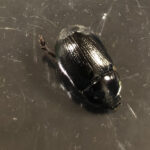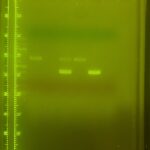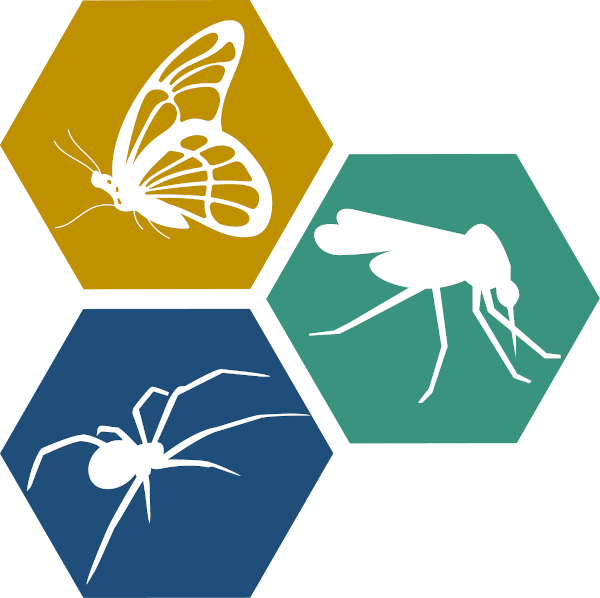Sample information |
|
| Picture |

|
|---|---|
| Location | |
| Collection date | 09/20/2022 |
| Captive / Cultivated? | Wild-caught |
| Group | Palm Beach Atlantic University |
| Observations | Black beetle with striped or dotted pattern on exoskeleton. The superior portion of the insect has a midline and was collected and stored in ethanol one day prior to experimentation. |
| Putative identification | Arthropoda Insecta Coleoptera Chrysomelidae Chrysomela Chrysomela vigintipunctata |
Methods |
|
| Extraction kit | DNeasy (Qiagen) |
| DNA extraction location | Partial abdomen |
| Single or Duplex PCR | Single Reaction |
| Gel electrophoresis system | Standard electrophoresis system |
| Buffer | TAE |
| DNA stain | Other |
| Gel images |

|
| Protocol notes | Two wild-caught arthropods were collected. A 6X loading dye was used for the gel and run at 100V with the power supply. The order of samples from lanes 1-7 are as follows: 100bp ladder, Arthropod #1 (Willow Leaf Beetle), Arthropod #2 (White weevil), positive control, negative control, positive gDNA, and a water control. |
Results |
|
| Wolbachia presence | No |
| Confidence level | High |
| Explanation of confidence level | The protocol was followed and executed step by step with little to no error. For Lane 2, this simply gives us the insect DNA. The controls give a visual as to where the infected DNA would have ended if the insects did contain Wolbachia. |
| Wolbachia 16S sequence | |
| Arthropod COI sequence |
|
| Summary | The Chrysomela vigintipunctata was found to be negative for Wolbachia. |
 Bombus impatients (Eastern Bumblebee)
Bombus impatients (Eastern Bumblebee) Agelenopis
Agelenopis My Data
My Data Common Eastern Bumble Bee (Bombus impatiens)
Common Eastern Bumble Bee (Bombus impatiens) American Bird
American Bird